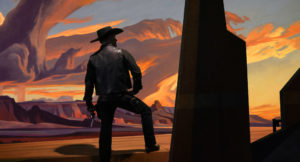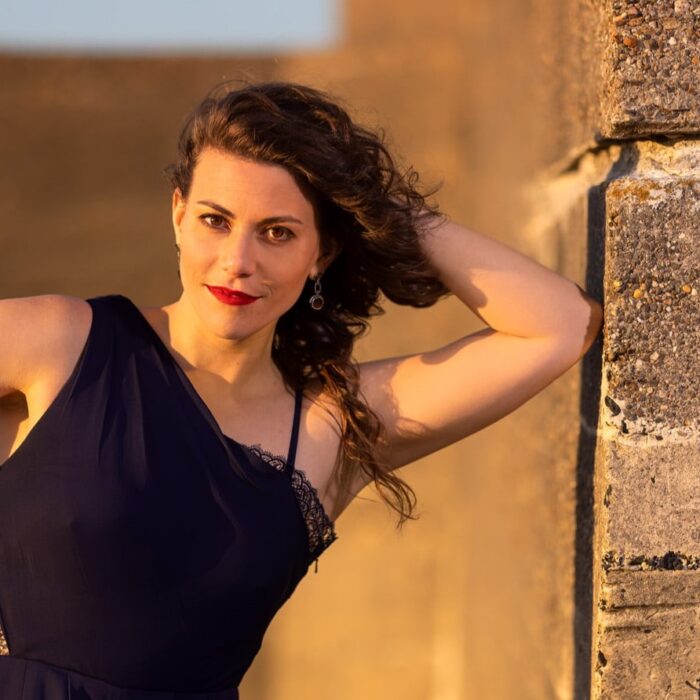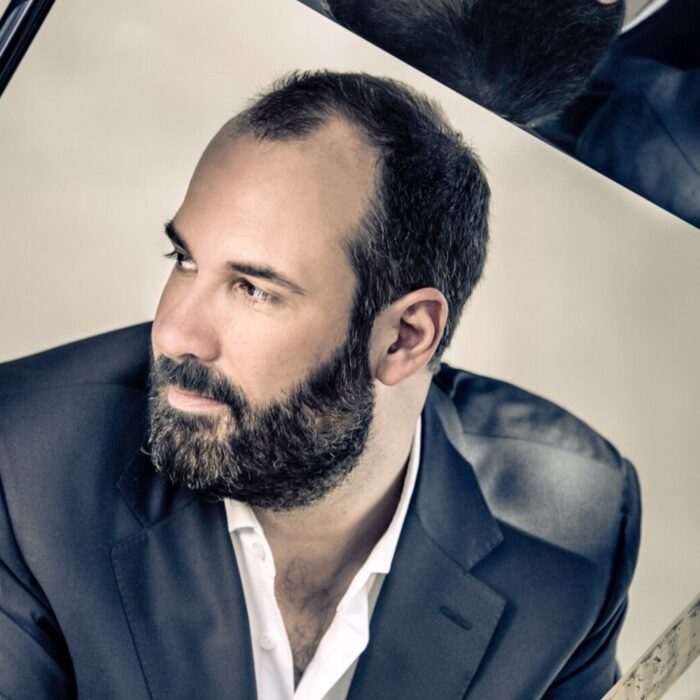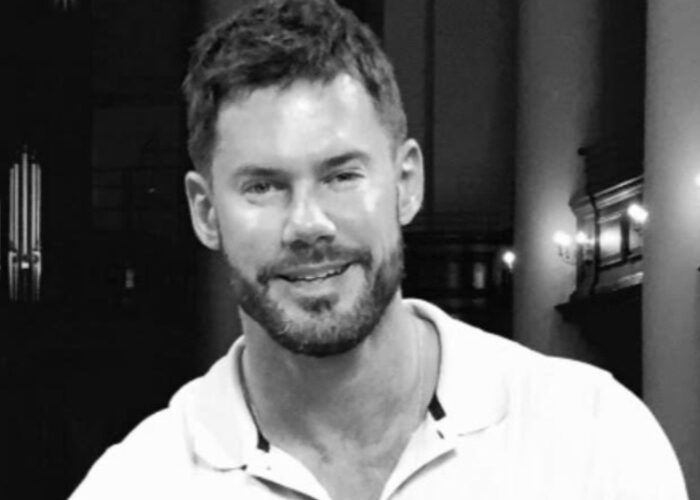
A Zane Grey Opera – Exploring the Creation & Production of Arizona Opera’s World Premiere of ‘Riders of the Purple Sage’
By David SalazarRain was pouring down for miles while composer Craig Bohmler was on a drive through the mountain region outside Phoenix. Everywhere he looked, visibility was low and he knew that due to the strong monsoon winds, staying out in this weather was probably not a wise proposition.
He eventually stopped at “the second light.”
“It’s important to note that it was the second light,” the composer noted. Why? “Because at the second light is where the sign for the Zane Grey Museum was. If not for that light I doubt I would have gone there. I found the museum and instantly was fascinated with him.”
And that’s how “Riders of the Purple Sage,” a western opera that will make its world premiere this weekend at the Arizona Opera, got its start in life.
The Genesis of ‘Riders of the Purple Sage’
Bohmler, during an interview with OperaWire, related how he ran home and read the novel “Riders of the Purple Sage” and found it to speak potently to him.
“It made me think that if Verdi were alive he would have set this story. It had two clear sets of lovers and clearly drawn antagonists,” he revealed.
So he started a treatment just for fun and then called up a friend to hang out and chat about what he had just created.
That friend was writer-composer Steven Mark Kohn, with whom he had previously worked. It didn’t take long for Bohmler to pitch him to give it a try and see how far they could take it.
“I initially was reluctant because I saw it as a large and daunting undertaking,” Kohn told OperaWire. “Craig persuaded me to give it a shot. The outline was helpful and shaped the piece.”
So he too read through Grey’s work, highlighting it thoroughly. It took just one read for the writer to realize that he would have a massive undertaking, especially with the text.
“The dialogue is very Victorian and it doesn’t sing. So we immediately started to move away from it,” he noted.
For there the collaboration took approximately five years from that first conversation through the start of production. Throughout the writing and rewriting process, the two would send drafts back and forth to one another until the text was where they wanted it.
“We always shared ideas without argument, though little debates,” noted Kohn. “But the piece comes first and the best idea in the room always won. It was a joyful collaboration.”
It helped that the two men were both composers and understood how to shape text so that it would eventually be sung.
“I thought this could be a Verdi-Boito kind of collaboration. That way we could go back and forth each speaking about the music and the words with one another,” Bohmler noted. “So it was great to have a composer onboard.”
In the process they went through two workshops with the Arizona Opera, which eventually opted for moving forward with production as part of its Arizona Bold program, the company’s community-based artistic initiative serving statewide audiences. The opera incidentally is the company’s first-ever commission.
Leading Lady
Soprano Karin Wolverton never expected to land the lead role of Jane Withersteen when she auditioned to be part of a workshop for the opera.
“I just got one little excerpt and had to learn more about the character from reading the novel,” Wolverton told OperaWire.
Eventually, when Bohmler was given the greenlight, she was his choice to open his opera and play the leading lady, a character that has a pronounced character arc.
“The whole story revolves around her and her problems with her elders. She comes from a strong Mormon religious background. She is raised to have strong faith. She is compassionate and I think that a little bit of her is trying to be her own person,” the soprano noted. “Throughout the opera you see her thinking more and more for herself.
“One of things I grabbed onto right away about this character is that ability to see the best in people. In Jane’s example, she can be blind to other people’s faults because she wants to see the best in them so badly,” she related. “But by the same token, she is a little more tied to what people want her to do. She acts a certain way because people expect that from her. But she ends up very much being an independent thinker.”
What Does an Operatic Western Sound Like?
Aside from the clear dramatic arc of the character, Wolverton was particularly enamored with the musical brew that Bohmler had concocted.
“Craig loves singers and writing for them. He understands the voice. He writes it so you can really build a phrase. But there are also conversational parts. He goes back and forth between these grand gestures and conversational pieces which helps pace it really well,” she stated.
Conductor Joseph Mechavich was also drawn to the music, but because of its development of great American opera and musical theater.
“It’s quintessentially American. There are a lot of Wagnerian elements in its use of leitmotifs with aria structuring that is Verdian. But I think that that’s just a continuation of our art form and it is just so American in how it has Carlisle Floyd and Sondheim as major influences.”
The Floyd comparison is no surprise, especially given that the famed composer was a teacher of Bohmler’s.
“The orchestra is the typical 55 piece orchestra that you would find in one of Carlisle Floyd’s works,” Bohmler revealed before speaking to the style he opted for employing in the opera, especially given the expectations surrounding the Western genre in cinema. “Americans have an idea of how that genre sounds. It mostly includes big sweeping French horn sounds and open intervals. So that’s the first thing I give them so they feel that they are in a western. And then we beg their forgiveness while quite a bit of action takes place on stage and it’s much more angular and atonal if you will. Then we get to our first tune.
“Floyd always said that if an audience has a vocabulary of 200 words, give them the 200 words they know plus 200 they don’t.”
One of the great challenges for the composer proved the creation of music for the horses. Throughout the opera characters signal that they are headed somewhere via horseback and from a stage production standpoint, it did not seem reasonable to assume a real-life horse would be employed.
“We couldn’t do what War Horse did because it was so stylized,” Kohn noted before Craig decided that he was going to turn to Britten for inspiration.
In the English composer’s “Peter Grimes,” the titular character claims that he will brave a horrifying storm and runs off stage.
“The curtain comes down and when it rises again, he comes onstage wet. From that, we experience the storm through sound and the ensuing visual completes the thought for us,” Bohmler noted.
“So what we decided was that they are going to say where they’re going to go. Then the curtain will come down and when it comes back up, they will already be there,” Kohn said. “After some horse music of course.
“You won’t see them, but the audience will understand that there are horses,” added Bohmler.
A Reflection of the Times
The opera may be set in the mythical west, but it embraces and explores themes that are very much at the heart of today’s polarizing world.
“It is about religious fundamentalism. In some ways it’s ‘La Forza del Destino’ and ‘Manon Lescaut’ when religion starts to influence the love of characters,” stated Bohmler.
“It was also about a woman’s place in society and her ability to assert herself. We just had a million women march recently around the US,” added Kohn.
“But it also addresses the gun issue with characters having conflicting views on them. Jane takes the guns away from the people who work for her,” continued Bohmler. “The gunman has a very different idea about the use of guns. And those two eventually fall in love and they have to reconcile, among other things, that idea. Gun control advocates will feel that they have been heard and the same goes for anti-gun advocates.”
“This piece does not set out to shock the audience or hit them over the head,” supplemented Mechavich. “It does give the audience the ability to take what they want from it. It plants the seed so that they can water it if they please.”
“But if they don’t, it’s just a really beautiful love story about people falling in love and finding each other,” concluded Wolverton.
“I think the audience is going to walk away with an enriching, captivating and emotional experience. I’m excited to see how they react,” Kohn concluded.
In just a few days, he will find out. And so will the entire opera world.
“Riders of the Purple Sage” runs for two performances in Tuscon on Feb. 25 and 26 before heading to Phoenix for three shows on March 3, 4 and 5.


